3 Oct 2014
0 CommentsCanadian Angel of the Year Award
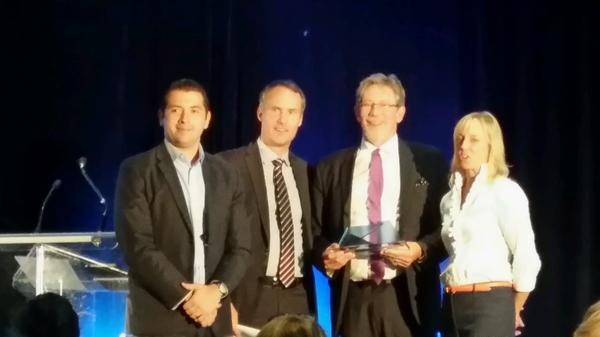
At the NACO Summit in Québec City, it was truly humbling to receive the Canadian Angel of the Year Award. I see this partly as a calling to be an ambassador to continue to help raise the Angel bar in Canada in the coming years. I wish to thank all those kind colleagues who, unbeknownst to me, wrote letters of nomination. Also, this is all based on the remarkable people at GTAN and in the Waterloo and Canadian ecosystem generally.
In response to the award, and recognizing the opportunity to build on current success, I shared the following observations and future challenges at the closing Keynote on Friday 3 October, 2014.
“TODAY’S CRITICAL MASS CAN POWER A QUANTUM LEAP”
Closing Keynote NACO Summit, Québec City Friday 2 October, 2014
Bonjours, mesdames et messieurs. Good morning, ladies and Gentlemen.
I hope that Yuri was aware of what he was unleashing by inviting me to share perspectives and future challenges of Angel investing in Canada! Not unlike a startup running on “fumes”, Canada’s angel sector reminds me of the quip from cartoonist Bill Hoest: “I just need enough money to tide me over until I need more”. I’ll start by looking back to help us paint a future directional context.
As Angel investors, we’ve watched a powerful people-driven engine, coming from nowhere, to become a key enabler of Canada’s future prosperity. As Angels, we fuel innovation companies with our capital and mentorship, ultimately creating some of the highest value jobs for 21st century Canada. What’s not to like about that?
Let’s turn the clock back about 5 years. In 2009, the global economy endured the infamous credit crunch, perhaps the worst economic correction since the Great Depression. I observed this to be the final nail in the coffin for a large number of Canadian venture capital firms, for years struggling to generate viable returns. The seeming extinction of venture capital A-rounds and the bleak landscape for young, emerging companies, compelled me, as a seasoned tech investor, to get involved with the founders at Golden Triangle AngelNet (GTAN) in Waterloo-Guelph-Wellington-Stratford area. In a pattern surely repeated across Canada, Angel Groups from a slow start quietly and persistently worked to fill the funding gap through a labour-intensive “syndication” of Angel capital, with other groups and with government co-investment. In Ontario, this meant repurposing MaRS IAF from its origins as a VC on-ramp to co-investment in Angel rounds, lobbying that ultimately led to the Feddev “Investing in Business Innovation” (IBI) program, and BDC convertible notes.
A typical syndication for a top tier investee company might entail half a million dollars of Angel money being spun into $1.5 million or more. I used to describe this approach as providing “half the money of a VC A round for 10 times the effort”. At the time, I imagined this to be a strategy for a short term “bridge” of Canada’s innovation ecosystem to a more sustainable future. How did this market correction turn out for Canadian Angels?
NACO stats show a remarkable growth in total Angel investment. Between 2012 and 2013 alone, Canadian Angel group direct investments grew a stellar 120% from $40 million to $89 million. Of course, this doesn’t capture the aforementioned co-investment leverage that Angel investors attract nor does it cover investments outside of NACO members. All of us rightfully deserve to be proud of such collective impact.
But is it enough? Both from my own international investing and available statistics, it would appear that Canada’s Angel ecosystem is ahead of Europe on the maturity curve. I would estimate Canada has a 3-5 year head start on Europe. On the other hand, our American friends are definitely well ahead in maturity, deal dollars and information gathering. Angel Capital Association (ACA) data shows almost $25 billion of total US angel investment in 2013. To be at this level, on a per capita GDP basis, Canada would need about $2.8 billion of annual Angel investment. Even counting all the leverage, Canadian angel investment needs to grow 5 to 10 times over the coming years just to achieve parity with the US.
In Waterloo, home of Perimeter Institute, we tend to love Quantum Mechanics metaphors. Thus, propelling today’s critical mass through a quantum leap is a mission all of us need to work on collectively and individually, whether as angels, angel groups, NACO, governments, venture capitalists, sponsors, in fact, each and every ecosystem participant.
So, I will conclude by identifying just five of the gaps that we collectively need to fill:
- Scaling: Recently, my friend Steve Currie, VP Strategy at Communitech, observed “Canada is great at starting companies, but not so good at growing them beyond the 5 year horizon.” This means less job creation but also smaller exits. In a study of 183 recent high tech exits versus 2300 comparable US exits, the average US valuation was US$384 million versus US$100 million for the Canadian companies. I don’t know about you, but I find it simply tragic to leave so much value on the table. Angels have a huge role both in mentoring management skills around scaling, but also pivotal to financing that scaling. And, bigger exits, will in a virtuous circle, drive more Angel investment.
- Giving Back: We need more of our successful serial entrepreneurs to become (super) angels and continue to start new ventures. In the Silicon Valley, Paypal alone had 14 serial entrepreneurs like Peter Thiel and Max Levchin whose experience and wealth helped build legends like LinkedIn, YouTube, Tesla, Kiva and Yelp. While we do have a few super angels, we have yet to spawn someone like Ron Conway whose 600 investments include Google, Facebook and Twitter. Canada needs more titans like Mike Volker and Jim Estill.
- Deal Discipline: Great companies grow and scale partly because of external motivations. In the 1990’s the hottest companies all wanted to do an IPO and that involved a playbook of enhanced management, systems and processes that also helped the companies scale into better organizations. VCs also played a part, but today, this role often falls onto Angel investors, hence requiring a more “institutional” approach versus becoming just another retail asset class.
- Co-investment: Government funding has been critical to our success and it is key that funding increasingly backs Angel choices rather than governments having to choose winners. That said, there is plenty of room for more. For example, our Feddev IBI program in Ontario provides a 50% match while the almost identical “Double Equity” program in Austria does a 100% match to angels. And, the Angel Tax Credit, so common internationally, in parts of the US and in BC, would provide a much-needed boost to overall Angel resources.
- Operational Innovation: Currently, most angel groups run as nonprofits using largely committed volunteer deal structuring and with little automation of the process. A big reason for this is Securities Regulations, especially in Ontario, that put a chill on innovations that might trigger an expensive regulatory burden. While there is some hope that the proposed Equity Crowd Funding rules might provide the clarity for such innovations, there is also the risk that this is a force that further pushes deals into a retail mode when what we need instead is more institutional discipline.
With these key points in mind, and assuming the right environment, I have no doubt that greater innovation in business models will fuel growth of a larger and more sustainable Canadian angel landscape. All of us can play our part. To dial up our game, will be an aggressive, yet I believe achievable challenge. And, we need even better measurement so we can regularly monitor, and report back to ecosystem participants, our progress.
The road forward isn’t just about traditional business. Because Angel investors’ motivations uniquely straddle the ever-blurring boundary between “passion capital” and Wall Street-style finance, Angel investing will increasingly be a great exemplar of Social Innovation. To me, the culture of collegiality and sharing resembles my experiences in nation-building around charitable foundations.
The last five years have witnessed an unprecedented expansion of Canadian Angel investing and we are poised for even more remarkable growth in the next five. In the words of the incomparable Alan Turing,
“We can only see a short distance ahead, but we can see plenty there that needs to be done”.
Now, let’s get to work …
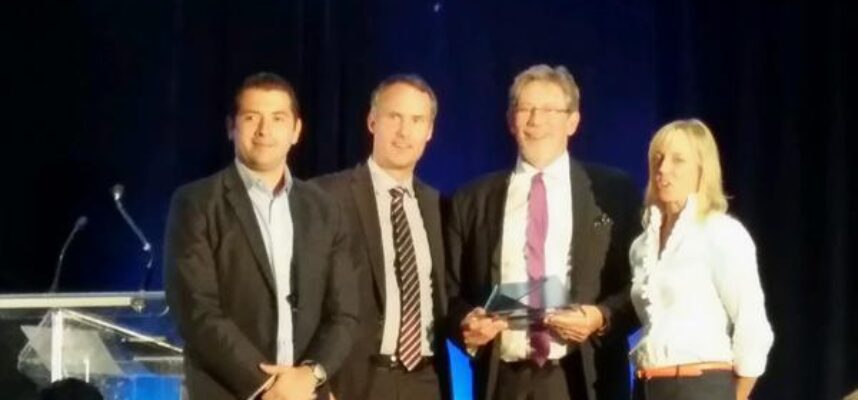
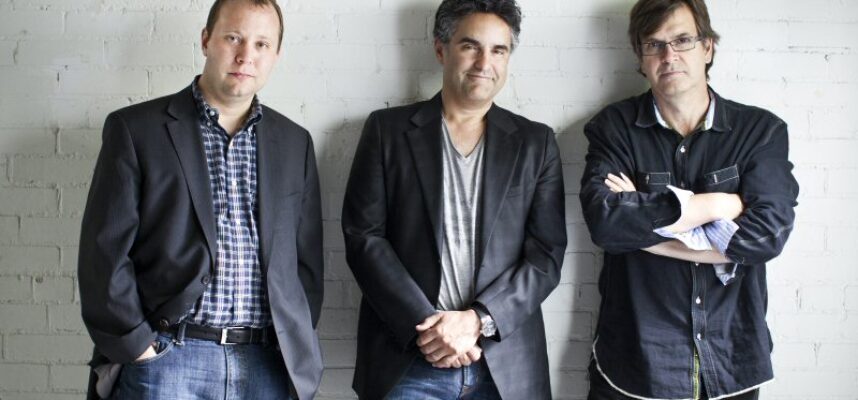

 Bill Gates, partly at the instigation of Warren Buffet who added his personal fortune to that of Gates, left Microsoft, the company he built, to dedicate his life to innovative solutions to large world issues such as global health and world literacy through the
Bill Gates, partly at the instigation of Warren Buffet who added his personal fortune to that of Gates, left Microsoft, the company he built, to dedicate his life to innovative solutions to large world issues such as global health and world literacy through the  Started by Paul Brainerd, Seattle-based
Started by Paul Brainerd, Seattle-based  Jeffrey Skoll, a Canadian-born billionaire living in Los Angeles and an early employee of
Jeffrey Skoll, a Canadian-born billionaire living in Los Angeles and an early employee of  Waterloo’s own Mike Lazaridis aims to transform our understanding of the universe itself by investing hundreds of millions of dollars into
Waterloo’s own Mike Lazaridis aims to transform our understanding of the universe itself by investing hundreds of millions of dollars into 
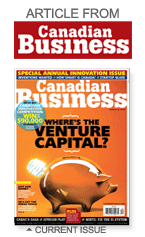

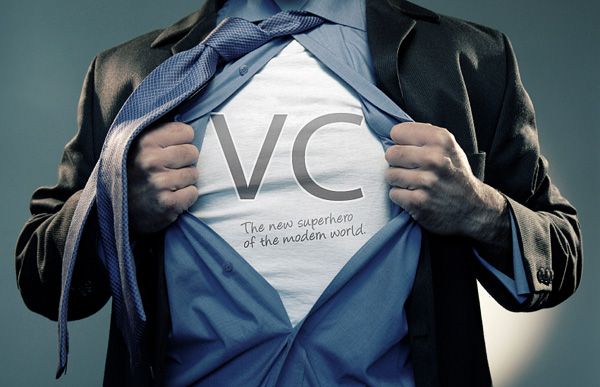 Credit: AIAlex.com
Credit: AIAlex.com Unlike this sign, I don’t want to end this piece on a note of doom and gloom. Nor do I want to leave the impression that there aren’t very talented people in the Canadian VC industry. Nothing could be further from the truth – our long term VC gap arises from long term structural challenges, such as a lack of discipline as imposed by global LPs and not having reached the proper banker/operator mix. There are other factors, including the small population and large geography unique to Canada, but all can be and should be overcome with the proper model.
Unlike this sign, I don’t want to end this piece on a note of doom and gloom. Nor do I want to leave the impression that there aren’t very talented people in the Canadian VC industry. Nothing could be further from the truth – our long term VC gap arises from long term structural challenges, such as a lack of discipline as imposed by global LPs and not having reached the proper banker/operator mix. There are other factors, including the small population and large geography unique to Canada, but all can be and should be overcome with the proper model.
 Avvey Peters from Waterloo’s
Avvey Peters from Waterloo’s  Alec Saunders, CEO of one of Canada’s most promising web/mobile startups,
Alec Saunders, CEO of one of Canada’s most promising web/mobile startups,  Peter Childs, an Ottawa social media strategist and tech luminary, has laid out a framework
Peter Childs, an Ottawa social media strategist and tech luminary, has laid out a framework 

 Jonathan @ Victoria/Mile 0
Jonathan @ Victoria/Mile 0 Jonathan sincerely appreciates all of the enthusiasm and support that he received along the way, especially from those individuals and families who deal with Autism every day, yet who found time in their otherwise heavily committed schedules to host local events, come out and meet him, and support him. Likewise, Jonathan is heartened by the many people from all walks of life, who, although they do not have direct connection to ASD, lent their efforts to the run and showed their concern and support for their fellow Canadians.
Jonathan sincerely appreciates all of the enthusiasm and support that he received along the way, especially from those individuals and families who deal with Autism every day, yet who found time in their otherwise heavily committed schedules to host local events, come out and meet him, and support him. Likewise, Jonathan is heartened by the many people from all walks of life, who, although they do not have direct connection to ASD, lent their efforts to the run and showed their concern and support for their fellow Canadians.
 Ray Simonson
Ray Simonson
10 Sep 2015
0 CommentsMiddlebrook Prize on the Move
The Middlebrook Prize for Young Canadian Curators has named Adam Barbu as its third winner and is moving up to a whole new level. Founded in 2012 by John Kissick and me, with initial investments from Middlebrook Social Innovation Fund, to support and mobilize Canadian creative talent, the Prize aims to inspire positive social change through creativity and connectedness in a time of unprecedented economic, environmental, social, and cultural challenges.
First of all, the Prize has a new home in our partner gallery, the recently re-branded Art Gallery of Guelph. Led by Dawn Owen, the gallery provides a compelling new venue to host the Prize exhibition and to mentor the winner.
Secondly, the Prize now has a physical form and a visual identity as befits an increasingly important Canadian cultural icon. Designed by the immensely talented and award winning creative director, Chris Duchaine, our new visual identity reflects the knowledge integration inherent in modern curating interpreted with the most modern design principles. Paying homage to the “White Cube” abstraction of the idealized art gallery, it also references the forces that are breaking down that cube and moving curation firmly into the future, perhaps embracing new ideas like the Ultra Contemporary Art Movement.
Hear Chris discuss his design:
And, finally, the Prize now has a permanent online home with a website at MiddlebrookPrize.ca to properly highlight the accomplishments of this growing group of young opinion leaders in the arts world. To acknowledge that growing influence, the winners comprise an expert centre, using the cloud-based service ExpertFile to highlight the developing oeuvre of our cadre of winners. To further encourage the growth of this network of leaders, Katherine Dennis, the 2013 Middlebrook Prize winner, was a member of the selection jury for the 2015 Prize. We extend a special thanks to Kendra Martin for managing the design and implementation of our web presence.
In keeping with 6 words in the Prize name, (hence the “cube” in the visual design), we’ve chosen a playfully “cubic” hashtag of #MPfYCC. Stay tuned for more exciting developments, but do check out Adam’s exhibition opening on September 17th and the Middlebrook Prize Award Day on October 24th.